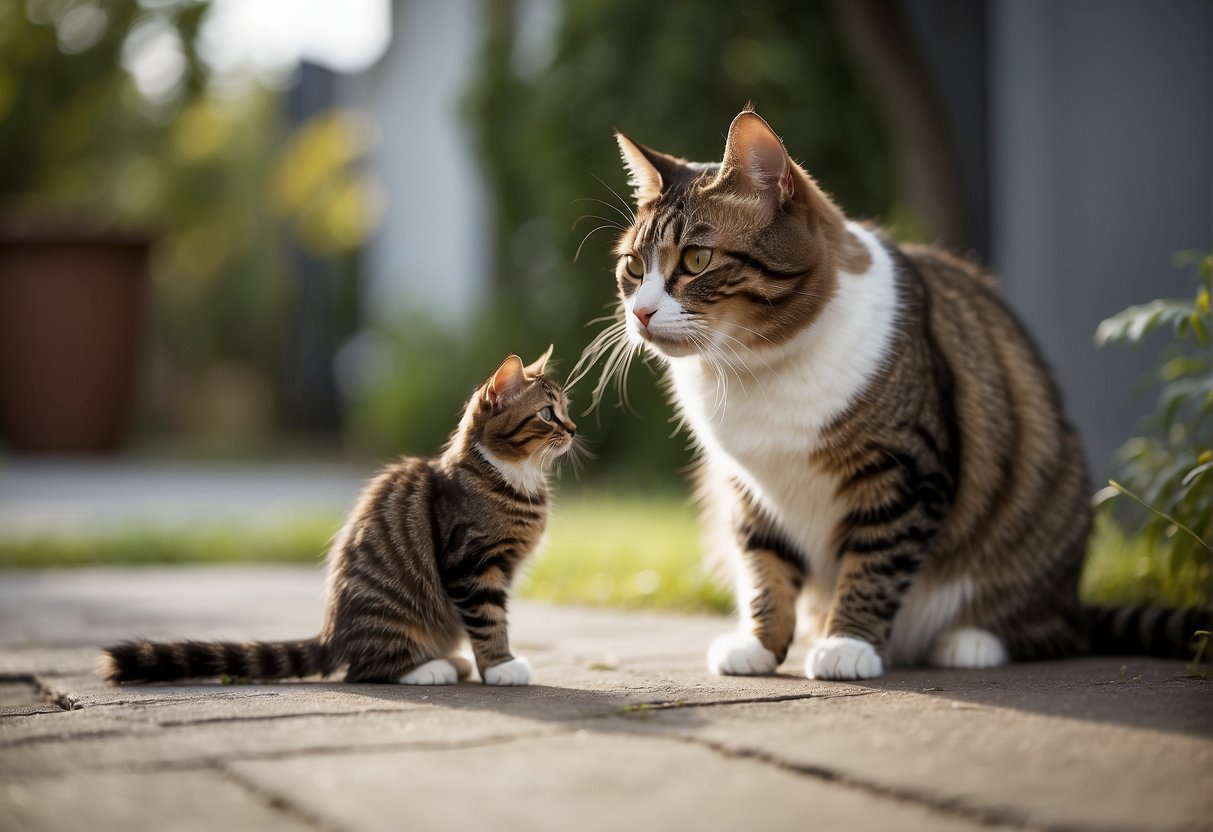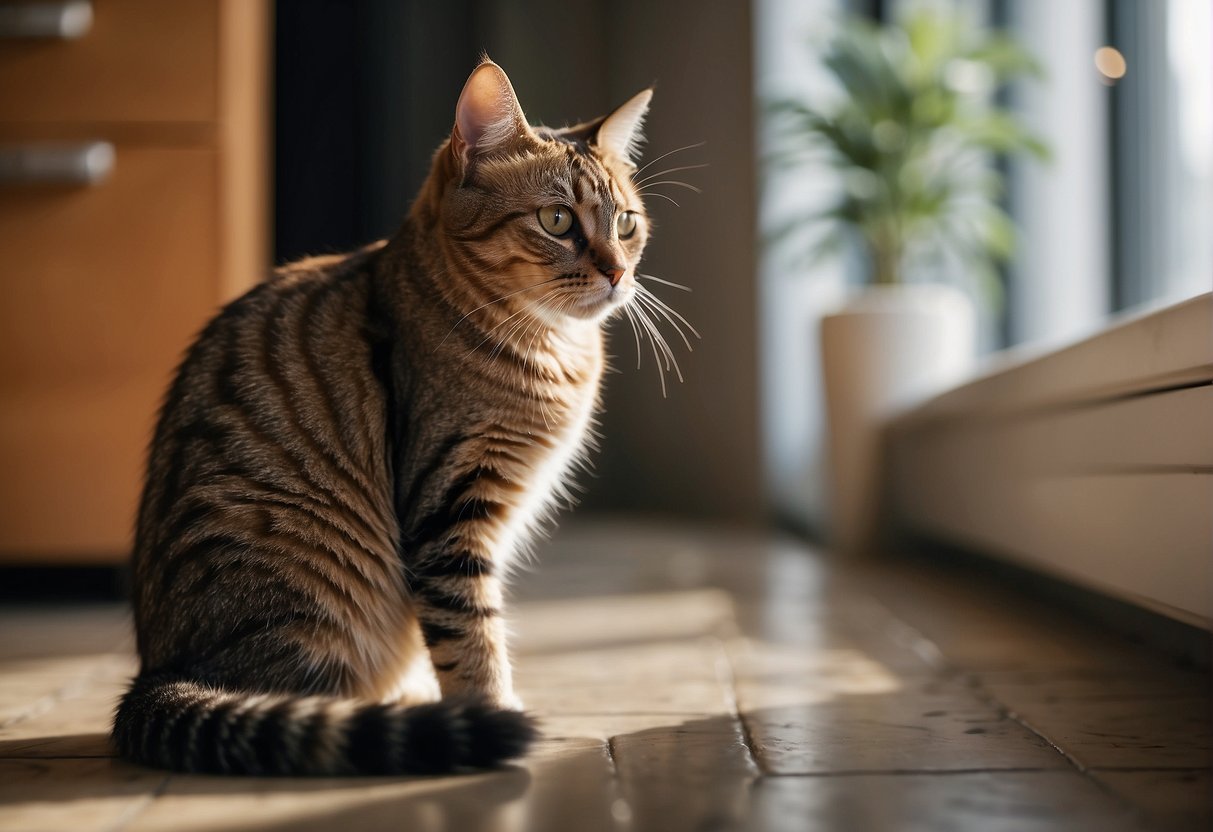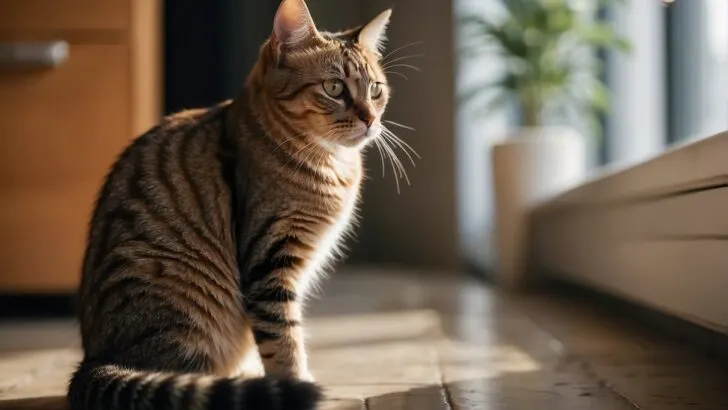Urinary Tract Infections, or UTIs, in cats are often the result of bacteria entering and multiplying in the urinary tract, which can include the bladder and urethra. If you’ve ever noticed your feline friend in distress while using the litter box, you may be witnessing symptoms of a UTI.
The most common culprit behind these infections is Escherichia coli, a nasty bacteria that’s usually found in feces and can make its way into your cat’s urinary system. Cats are meticulous groomers, but sometimes this very habit can inadvertently lead to transferring bacteria from their litter box to their urinary tract.

While UTIs in cats are relatively rare, accounting for only a small percentage of urinary tract conditions, they can occur and lead to discomfort for your furry companion. Cats with compromised immune systems, such as seniors or those with underlying health conditions, are more susceptible to these infections.
A UTI might also pair up with other issues like the formation of crystals or stones in the bladder, known as uroliths, further complicating your cat’s situation. Stress, often overlooked, is also a significant factor that can influence the health of your cat’s urinary tract, so keeping their environment calm and enriched is key to prevention.
Seeing your cat struggle with urination can be distressing, but catching the signs early can help your vet take swift action. A urine sample is typically required to diagnose a UTI accurately, so if you notice any changes in your cat’s litter box habits, such as more frequent urination, blood in the urine, or meowing in pain, it’s time to consult your veterinarian.
UTIs in Cats

Urinary Tract Infections (UTIs) are a common health concern that can affect your feline friends at any age.
Causes of Feline UTIs
UTIs in cats are often associated with the presence of bacteria in the bladder or urethra, which can lead to infection. However, it’s not just bacteria that can cause these infections. The list of potential culprits includes:
- Bladder stones or urinary stones: These can irritate the bladder and create an environment where bacteria can flourish.
- Feline Idiopathic Cystitis (FIC): This is a common condition that can cause inflammation of the bladder without a clear cause.
- Diabetes mellitus and kidney disease: Both conditions can make cats more susceptible to UTIs.
- Stress: It can be a major factor in the development of FIC, which can lead to UTIs.
UTIs can be a part of the spectrum of feline lower urinary tract disease (FLUTD), which reflects a variety of potential urinary issues.
Recognizing Symptoms
Detecting a UTI early can help ensure a quick and successful treatment with antibiotics. Here are some signs to watch for:
- Frequent urination or straining to urinate, sometimes with little urine produced
- Bloody or unusually strong-smelling urine
- Pain apparent by yowling or discomfort when urinating
- Excessive licking of the genital area
- A marked change in behavior such as aggression or hiding
If you notice any of these symptoms, it’s vital to consult your veterinarian promptly. They can conduct a urine test to diagnose the issue and prescribe the right antibiotics for treatment.
Diagnosis and Treatment
When suspecting your cat might have a UTI, understanding the process of professional diagnosis and the range of effective treatments available is crucial. This will aid in managing and potentially preventing recurrent UTIs, ensuring your feline friend remains happy and healthy.
Professional Diagnosis
Your veterinarian will start with a urine sample to conduct a urinalysis. This test, often done under a microscope, helps detect the presence of blood in the urine, bacteria, and crystals.
In some cases, further diagnostics like x-rays or an ultrasound may be necessary to check for blockages or stones in the urethra. A culture and sensitivity test might also be performed to identify the specific bacteria and the most effective antibiotics for treatment.
Effective Treatments
Once a UTI is confirmed, the treatment generally includes antibiotics. To tackle discomfort, your cat might also be prescribed pain medication. A diet change is sometimes recommended, such as switching to canned food to increase hydration.
Your veterinarian might suggest dietary supplements as well to support bladder health. In severe instances involving blockages or stones, surgery may become necessary.
Managing Recurrent UTIs
Prevention is key in managing recurrent UTIs. Ensure your cat maintains a healthy weight and has a stress-free environment, as both stress and obesity can contribute to urinary issues.
Provide clean and easily accessible litter boxes, encourage water intake, and consider a diabetic screening if your cat is at risk. As a preventive measure, some cat owners find success in using prescribed supplements to manage symptoms of cystitis and feline lower urinary tract disease.
Preventive Measures and Lifestyle Changes
To keep your feline friend happy and their urinary tract healthy, consider these tailored lifestyle changes and enhancements.
Diet and Hydration
Diet: Ensuring a balanced diet is key. Look for foods that support urinary health, particularly ones that have the correct balance of minerals to avoid any imbalances that could lead to urinary tract issues. Weight management is also crucial; overweight cats are at a higher risk for urinary tract problems.
Hydration: Increasing your cat’s water intake is vital. Cats are often not keen on drinking water, so incorporating canned food, which has more moisture than dry food, can be helpful. Additionally, placing multiple water bowls around the house and using a cat fountain to encourage drinking can positively impact urinary tract health.
Environmental Enrichment
To minimize stress, which can contribute to urinary problems like FLUTD (Feline Lower Urinary Tract Disease), provide a peaceful home environment. This may include:
- Safe hiding spaces: Cats need a place to retreat.
- Scratching posts and toys: These can help reduce boredom and maintain healthy behavior.
- Consistent routine: Regular feeding and playtimes can alleviate anxiety.
Avoid using home remedies without veterinary guidance; cats have unique health needs, which means what might seem a harmless treatment could actually be detrimental.
Special Considerations
When it comes to urinary tract infections (UTIs) in cats, there are unique factors that can influence both the risk and severity of these conditions. Paying attention to these details can save your beloved feline from discomfort and ensure timely treatment.
Gender-Specific Conditions
Male cats are at a higher risk than female cats for a potentially life-threatening condition known as urethral obstruction. This is due to their narrower urethra, which can easily become blocked by small stones or crystals (uroliths). Female catsfrequently suffer from bladder infections but are less likely to experience complete urinary blockage because of their wider urethral anatomy.
Aging and Chronic Health Issues
As cats age, they may develop chronic health issues such as kidney disease, diabetes, or hyperthyroidism. These conditions can compromise their immune system, making them more susceptible to UTIs.
For instance, a cat with diabetes might have a higher sugar content in their urine, creating a breeding ground for bacteria. Additionally, obesity can increase a cat’s risk of developing UTIs, while proper management of pH levels and overall health can prevent this condition.
Recognizing Emergencies
You should be alert to the signs of urinary emergencies. Bloody urine, strong attempts to urinate with little success, and painful cries are red flags.
These symptoms could indicate a lower urinary tract issue or a complete urinary obstruction, which can be fatal if not treated immediately by a veterinarian. It’s crucial to seek veterinary care urgently if you notice any signs of distress related to your cat’s urination habits.

My name is James, and welcome to FAQCats!
Along with our team of cat owners, expert pet enthusiasts, and pet professionals, we aim to write engaging helpful, engaging content about cats. At FAQCats we strive to provide content that’s accurate and fun to read. Our team writes about everything related to cats; even the most complex of topics. Through extensive research and caring for our own fur-pals, we’re able to provide something cat owners worldwide will love. Have a look around, and leave us feedback anytime!

